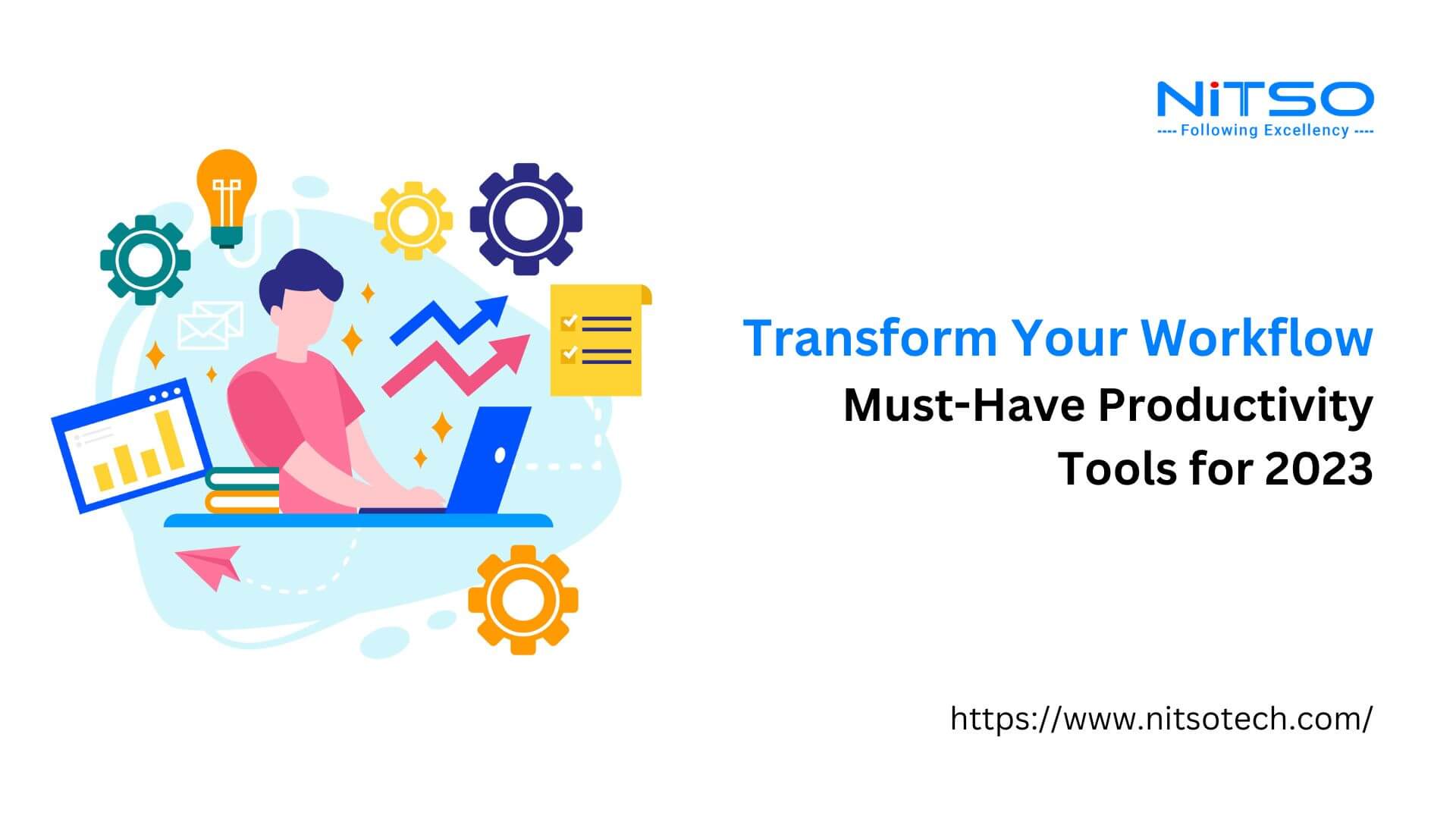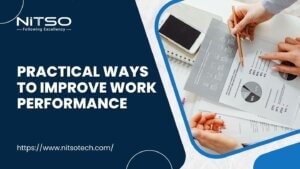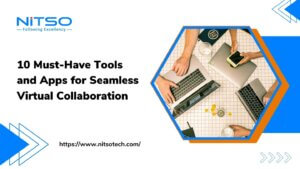For small business owners and marketers, time is an incredibly precious resource. With only 24 hours in a day, maximizing your productivity and efficiency is essential to growing your business and accomplishing more. Luckily, there are more tools and software solutions available now than ever before to help optimize your workflows.
In this article, we’ll cover the top 10 productivity tools that are must-haves for small business owners and marketers looking to work smarter. We’ll provide an overview of each tool, key features, top benefits, and how it can help save you time or boost efficiency. Whether you need to improve project management, minimize distractions, better collaborate with teams, or automate repetitive tasks, incorporating tools from this list can take your productivity to the next level. Read on to transform how you get things done!
Table of Contents
What are productivity tools?
Productivity tools are software, apps, or online services that help individuals and businesses improve efficiency, organization, collaboration, and focus. The main goal of productivity tools is to save time, reduce distractions, streamline workflows, and ultimately enable users to accomplish more in less time.
For small business owners and marketers, productivity tools are essential to managing multiple responsibilities and completing key tasks amidst competing priorities. The right tools can optimize how you manage projects, connect with clients, create content, analyze data, and run marketing campaigns.
Productivity tools encompass a wide range of solutions for different business needs:
- Time management tools for scheduling, task management, and tracking where time is spent
- Collaboration tools for communication, file sharing, and project management
- Note-taking and document tools for organizing information and ideas
- Focus and distraction-blocking tools to reduce interruptions
- Analytics and reporting tools to extract insights from data
- Automation tools to speed up repetitive tasks
- And much more!
With so many options available today, the key is identifying and integrating the specific mix of productivity tools that will provide the biggest benefit to your daily workflow and business needs. The tools covered in this article represent some of the top solutions used by small business owners and marketers to accomplish more in less time.
Top 10 Must-Have Productivity Tools for Small Business Owners & Marketers
1. Trello (Freemium)
Trello is one of the most popular project management and collaboration tools used by small businesses and marketers. It provides an intuitive, visual interface using boards, lists, and cards that make it easy to organize and prioritize projects and workflows.
Key Benefits of Trello:
- Flexible workflow structuring – Trello’s Kanban-style boards are perfect for modelling agile workflows. You can customize boards for each project or client workstream.
- Task management – Break down large projects into manageable tasks represented as Trello cards with attachments, checklists, due dates and more.
- Team collaboration – Share Trello boards with clients or team members and collaborate in real-time with commenting, notifications and activity logs.
- Mobile optimization – Trello has mobile apps for iOS and Android so you can manage projects on the go.
- Affordable pricing – Trello’s free plan includes unlimited boards, lists, and card members. Paid plans add features like custom fields and admin controls.
For small business owners and marketers, Trello increases organization and collaboration around both individual and team projects to boost productivity.
2. Evernote (Freemium)
Evernote is a prolific note-taking and organization app that lets you capture ideas, share notes, create task lists, and find information fast with robust search. It helps small businesses and marketers stay on top of ideas and tasks across projects.
Key Benefits of Evernote:
- Note organization – Organize notes into notebooks with tagging for easy searching and retrieval later.
- Capture anything – Save text, webpages, photos, scanned documents and more. Evernote’s optical character recognition makes the text in images searchable.
- Task management – Create to-do style notes to capture tasks, set reminders, and mark them complete.
- Accessible anywhere – Evernote syncs across all devices and the web so notes are accessible from anywhere.
- Security – Notes are encrypted in transit and at rest for secure access.
For small business owners and marketers, Evernote augments productivity by providing ubiquitous capture of ideas, secure cloud access to notes, and better organization across projects.
3. Asana (Freemium)
Asana is a fully-equipped project management and team collaboration tool with excellent capabilities for task management, reporting, calendars, and integration with other apps.
Key Benefits of Asana:
- Task management – Create tasks, assign them, set due dates, and track progress
- Team collaboration – Add teammates and collaborate with comment threads
- Integrations – Connects with tools like Slack, Dropbox, GitHub and more
- Reporting – Track progress with timeline, workload, and custom reports
- Workload management – See teammate workloads and adjust as needed
Asana increases productivity for marketers by providing oversight for projects, the ability to track initiatives, and transparency across teams.
4. RescueTime (Freemium)
RescueTime is an insightful time management and tracking tool that shows you how you spend time on devices and helps you be more productive through features like distraction blocking.
Key Benefits of RescueTime:
- Activity tracking – Automatically tracks time spent on apps, websites and documents
- Insightful reports – See your daily and weekly activity summary and set productivity goals
- Distraction blocking – Block distracting apps and websites during focus times
- Team visibility – Understand how teams are spending their time
- Integrations – Integrate calendar apps like Google Calendar
For business owners and marketers, RescueTime provides valuable visibility into time spent on tasks to maximize productivity.
5. Buffer (Freemium)
Buffer is an easy-to-use social media management platform for scheduling posts, analyzing performance, managing multiple accounts, and enabling team collaboration.
Key Benefits of Buffer:
- Content scheduling – Schedule posts for the best times to share on social media
- Cross-platform posting – Post to Twitter, Instagram, LinkedIn, Facebook and more
- Analytics – Get insights into engagement and the best times to post
- Team collaboration – Multiple teammates can access and manage accounts
- Image creator – Create optimized images for posts without design experience
For social media marketers, Buffer is an invaluable tool to manage multi-channel social media campaigns.
6. Zapier (Freemium)
Zapier is a powerful automation tool that connects web apps to help you integrate systems, automate repetitive tasks, and build multi-step workflows without coding.
Key Benefits of Zapier:
- 2,000+ app integrations – Connects a wide range of apps
- Easy automation – Build automated workflows called Zaps without coding
- Multi-step workflows – Trigger actions across multiple apps
- Time savings – Automate repetitive, manual processes
- Monitoring – Get notified if Zaps run unsuccessfully
Zapier helps small businesses leverage automation to be more productive.
7. Grammarly (Freemium)
Grammarly is an intelligent digital writing assistant that checks grammar, spelling, punctuation, tone, and more to help you produce clear, polished professional writing.
Key Benefits of Grammarly:
- Detects grammar, punctuation, and spelling errors
- Checks for vocabulary and tone
- Integrates with email, docs, social media
- Provides citation and plagiarism checking
- Available as an app and browser extension
Grammarly is an essential productivity tool for creating professional, polished business writing.
8. MailChimp (Freemium)
MailChimp is a full-featured email marketing platform that makes it easy for small businesses to create, send, and track professional email campaigns, newsletters, and more.
Key Benefits of MailChimp:
- Customizable templates – Use beautiful pre-designed email templates
- Segmentation – Send targeted emails to subscriber groups
- Automations – Trigger automated welcome, follow-up and other workflows
- Reports – See opens, clicks and unsubscribes to optimize campaigns
- Integrations – Connect your e-commerce store, CRM, and other apps
- Affordable pricing – Free plan for up to 2,000 subscribers
For small business marketers, MailChimp makes professional email marketing accessible and affordable.
9. Slack (Freemium)
Slack is a versatile team communication hub that brings messages, tools, files, notifications, apps, and workflows together in one place for better collaboration.
Key Benefits of Slack:
- Channels – Organize conversations by topics, projects or teams
- Integrations – Bring in files, and data from other apps directly into Slack
- Searchability – Instantly search through past conversations and files
- Apps and bots – Automate tasks like notifications and project updates
- Affordable pricing – Free plan includes key features
Slack increases productivity for small teams through streamlined, transparent communication.
10. Nitso HRMS (Premium)
Nitso HRMS software is a leading HRMS platform designed for small and medium businesses. It enables organizations to more efficiently track employee data, manage performance, ensure compliance, and improve the onboarding process.
Key Benefits of Nitso HRMS:
- Centralized employee records – Store documents, contact info, compensation, etc.
- Time tracking – Track PTO, sick days, and hours worked per project
- Applicant tracking – Manage job postings and applicant pipeline
- Reporting – Generate custom reports on employees, time, and more
- Mobile access – Managers can access records and approve leave from anywhere
An affordable, user-friendly human resource management software like Nitso HRMS helps SMBs handle employee management, so they can focus on growth.
Top 7 Benefits of Productivity Tools
The right productivity tools offer a wide range of benefits for small business owners, marketers, and entrepreneurs looking to enhance their efficiency and output. Here are 7 key benefits of using productivity tools:
Save time
Productivity tools automate, speed up and simplify key tasks so you can focus your effort on high-value priorities. This enables you to get more done in less time.
Increase focus
Features like distraction blocking, time tracking, and digital calendars can help minimize interruptions and distractions that hamper productivity.
Improve collaboration
Tools with shared access and statuses foster better collaboration across teams and with clients.
Optimize workflows
Integration, customization and automation can streamline multi-step workflows for greater efficiency.
Access from anywhere
Cloud-based and mobile-friendly tools allow remote work and location flexibility.
Gain insights
Analytics tools reveal patterns and provide data to inform better decisions.
Cost-effective solutions
Many top-rated productivity tools have free or affordable options suitable for small businesses.
Leveraging the right mix of solutions multiplies what you can accomplish in a day. The productivity gains let you focus energy on the highest-value aspects of operating and growing your business.

What Are The Types of Productivity Tools?
Productivity tools come in many different forms and address various business needs. Here are some of the main categories and types of productivity tools:
Project Management Tools
Project management tools like Asana, Trello, and Monday.com help plan projects, create workflows, assign tasks, and collaborate with teams. They provide oversight on deliverables, milestones, and progress to keep projects on track.
Time Tracking Tools
Time tracking tools like Toggl, Timely, and Harvest help monitor where time is spent on tasks and projects. They provide visibility into how you use time so you can identify waste and optimize workflows.
Task Management Tools
Task management tools like Todoist, Microsoft To Do, and Wrike help you keep track of personal and work-related tasks. Features like reminders, due dates, and priorities help you stay organized and focused.
Calendar Tools
Calendar tools like Google Calendar, Outlook Calendar, and Calendar help schedule meetings, appointments, and events. They provide an overview of your schedule so you can plan your day and use time effectively.
Note Taking Tools
Note-taking tools like Evernote, OneNote, and Notion help capture ideas and information. Features like tagging and searching help you organize notes and access them across devices.
Document Tools
Document tools like Google Docs, Word, and Grammarly help create, collaborate, and refine documents efficiently. They streamline documentation with templates, commenting, and real-time co-editing.
Email Tools
Email tools like Gmail, Outlook, and Boomerang help you manage high volumes of email through features like scheduling emails, templates, inbox organization, and email automation.
Communication Tools
Communication tools like Slack, Microsoft Teams, and Zoom enable easier collaboration through chat, video conferencing, file sharing, and notifications.
Analytics Tools
Analytics tools like Google Analytics, Mixpanel, and Tableau help analyze data and extract insights you can use to make informed business decisions.
Automation Tools
Automation tools like IFTTT and Zapier help you automate repetitive tasks and processes by integrating apps and triggering actions. This saves time on manual workflows.
Closing Thoughts
Boosting productivity is crucial for small business owners and marketers trying to maximize their time and accomplish more. The right tools can streamline workflows, minimize distractions, and help manage an array of responsibilities.
The 10 tools covered in this article represent some of the top-rated productivity solutions for common tasks like project management, social media marketing, CRM, automation, and more. While individual needs vary, evaluating and incorporating tools like these can give an immediate productivity boost.
The key is identifying areas of friction in your business and selecting the right tools that will provide the greatest efficiency gains and value. Many of the highlighted options offer free versions with basic features to test out.
Integrating even two to three new tools can save hours each week, compounding to huge time savings over the course of a year. The productivity dividends easily justify the investment for most small businesses.
Keep assessing new tools and optimizing processes as your business grows. Maintaining focus on efficiency even amidst growth will enable your small business to accomplish more year after year.
FAQs Related to Productivity Tools
What are the 3 major productivity tools?
The 3 major categories of productivity tools are:
1. Time management tools like calendar apps, time trackers and to-do list apps.
2. Collaboration tools for communication and file sharing, like Slack and Trello.
3. Organization tools that help capture, organize and find information easily, like Evernote.
Is Excel a productivity tool?
Yes, Excel is considered a productivity tool. Its features like formulas, pivot tables, and macros help businesses analyze data, create reports and more productively.
Why is it called productivity tools?
They are called productivity tools because they help individuals and businesses improve efficiency, get more done in less time, and increase productivity. The tools optimize workflows and reduce wasted time.
What are the 5 sources of productivity?
The 5 main sources of productivity are:
1. Improved processes and workflows
2. Technological automation
3. Focus and time management
4. Collaboration and communication
5. Data, analytics and insights
What are productivity techniques?
Productivity techniques refer to methods individuals and businesses use to boost efficiency and output. Examples include goal setting, batching tasks, minimizing distractions, leveraging productivity tools, and optimizing workflows.
What is an employee productivity tool?
Employee productivity tools are software or apps that help employees improve productivity by managing time better, minimizing distractions, collaborating effectively, and automating tasks. Top tools include Asana, Trello, Slack, and Chrome extensions like Momentum Dash.








0 Comments